

 Photography by John Jackson
Photography by John Jacksontare long enough at this ’36 Willys sedan and you begin to see where a creative idea crosses over into practical form. In other words, “Imagineering” (a registered trademark of Disney Enterprises) is a hallmark within our hobby. It’s the very nature of hot rodding to “think outside of the box” and imagine a great idea and then pull it off. Such is the case of our ’36 Willys sedan pictured here that belongs to Ron and Vicki Ernsberger of Ohio. No strangers to hot rods, especially the Willys (see accompanying feature on pages 20-23), they teamed up with Brian Limberg of The Tin Man’s Garage (TMG) to yield an imaginative and trendsetting effort with their ’36 Willys four-door sedan.
The “other” ’36 in Ron and Vicki’s garage is the performance designed and built Willys pickup, while this four-door sedan is a combination of elegance and performance. There is no getting around the four-door Willys has a distinct hint of performance with the magnesium wheels and cheater slicks and, of course, the tube front axle gives the car a very gasser-style appearance. Couple this with the four doors, a stylish and colorful (note headliner) interior, and the overall room not associated with a cramped hot rod, and you have a very driveable hot rod.
Beginning with the stock frame it required Limberg to bolt it down to his frame table and begin the straightening and squaring process. Once this was accomplished, unusable original holes were filled before the boxing process took place. The rear section of the frame was narrowed to make room for the 10-inch cheater slicks.
Listening to Limberg he’ll tell you, “The goal was to keep the tires as close to the wheel openings as possible in the rear and to match the tire diameter to pay homage to the nostalgic Willys gassers of the era gone by.”

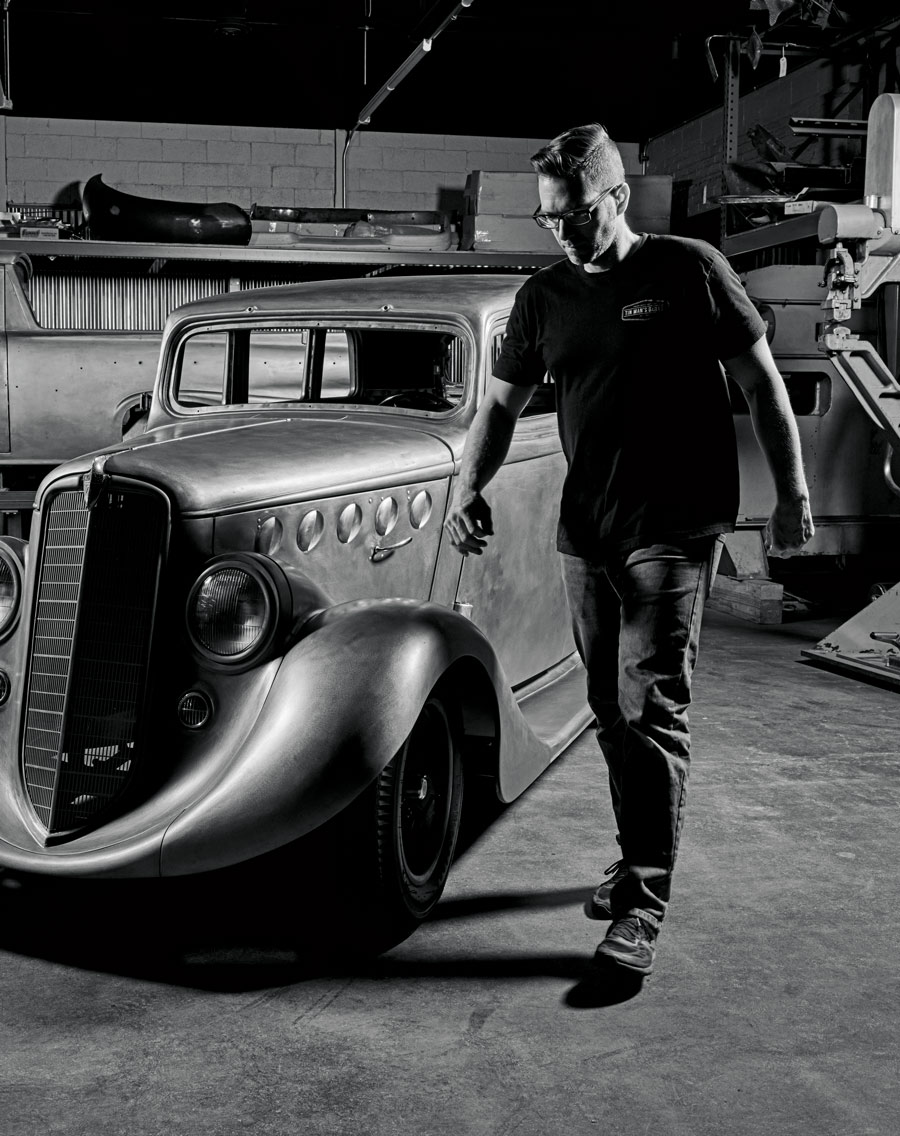
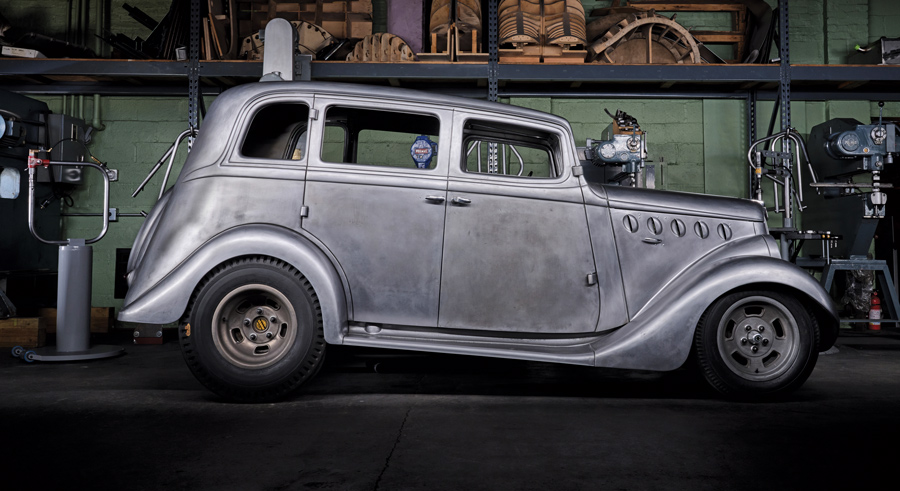

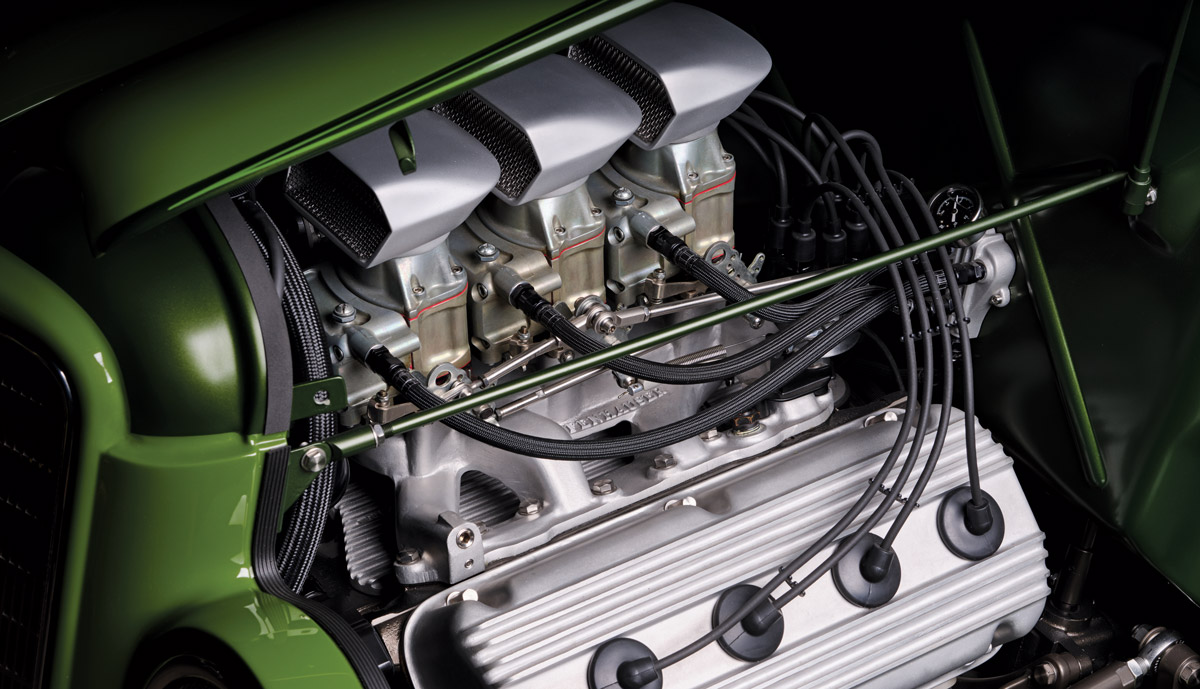
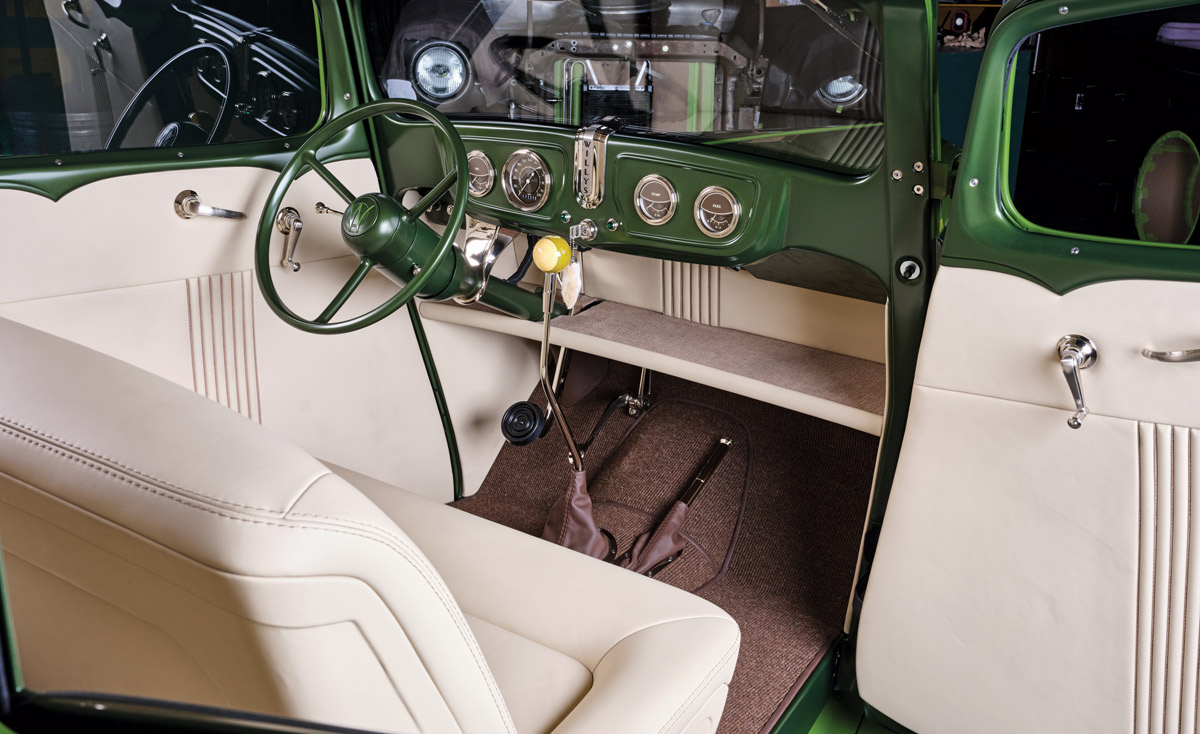
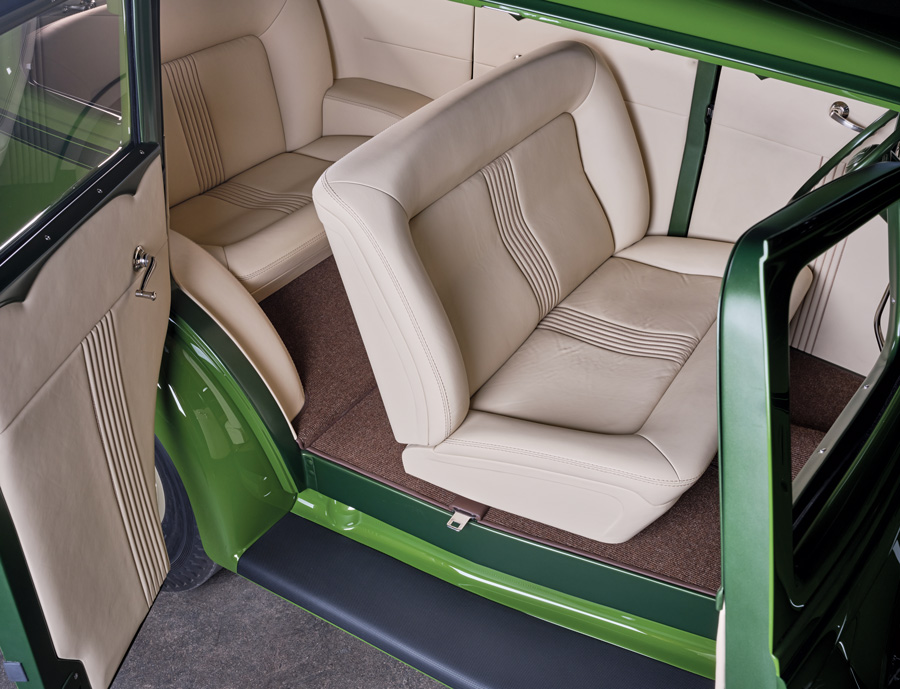
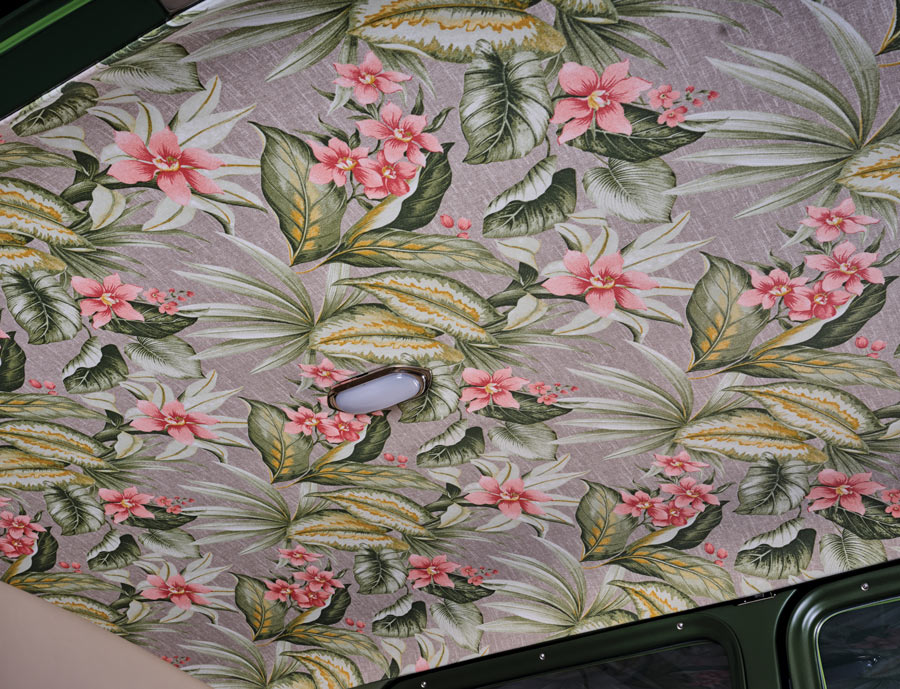
A quick word on the color. Both Ron and Limberg agreed that the color needed to look like it was from the ’60s but fit a car of ’30s origins. What came about was a solid green with a gold pearl added for the main body color and a metallic color for the belt molding. Next up the solid green was mixed to look a bit “muddied” to mimic the new muddy grays, tans, and blues used on today’s new cars.
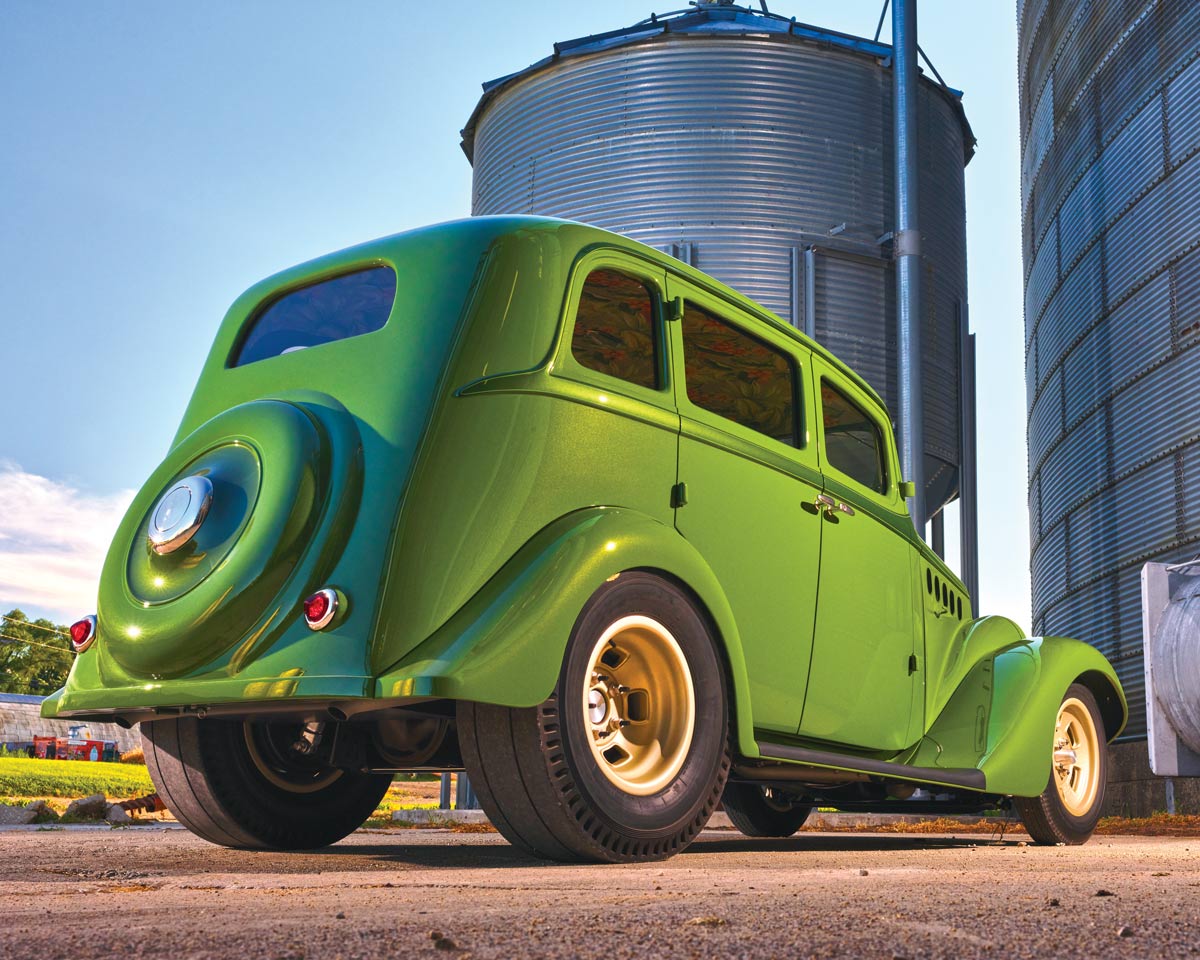
We like the idea followed by execution … Imagineering befits this build very well.